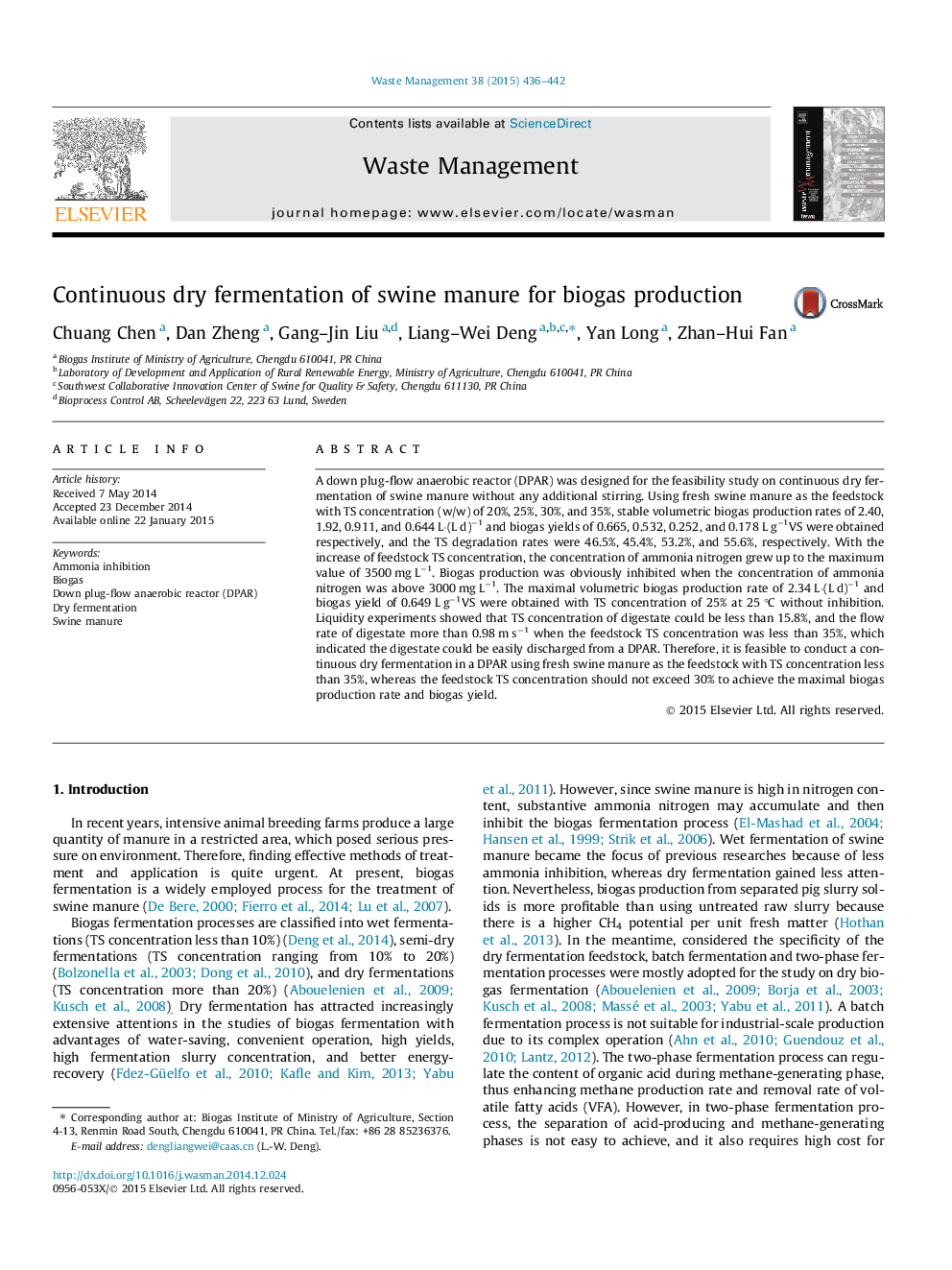| Article ID | Journal | Published Year | Pages | File Type |
|---|---|---|---|---|
| 4471430 | Waste Management | 2015 | 7 Pages |
•Continuous dry fermentation of swine manure for biogas production is feasible.•The feedstock TS concentration exerted a significant impact on biogas production.•Influences of ammonia and digestate liquidity were investigated in this study.•The results showed that the feedstock TS of swine manure should not exceed 30%.
A down plug-flow anaerobic reactor (DPAR) was designed for the feasibility study on continuous dry fermentation of swine manure without any additional stirring. Using fresh swine manure as the feedstock with TS concentration (w/w) of 20%, 25%, 30%, and 35%, stable volumetric biogas production rates of 2.40, 1.92, 0.911, and 0.644 L·(L d)−1 and biogas yields of 0.665, 0.532, 0.252, and 0.178 L g−1VS were obtained respectively, and the TS degradation rates were 46.5%, 45.4%, 53.2%, and 55.6%, respectively. With the increase of feedstock TS concentration, the concentration of ammonia nitrogen grew up to the maximum value of 3500 mg L−1. Biogas production was obviously inhibited when the concentration of ammonia nitrogen was above 3000 mg L−1. The maximal volumetric biogas production rate of 2.34 L·(L d)−1 and biogas yield of 0.649 L g−1VS were obtained with TS concentration of 25% at 25 °C without inhibition. Liquidity experiments showed that TS concentration of digestate could be less than 15.8%, and the flow rate of digestate more than 0.98 m s−1 when the feedstock TS concentration was less than 35%, which indicated the digestate could be easily discharged from a DPAR. Therefore, it is feasible to conduct a continuous dry fermentation in a DPAR using fresh swine manure as the feedstock with TS concentration less than 35%, whereas the feedstock TS concentration should not exceed 30% to achieve the maximal biogas production rate and biogas yield.
